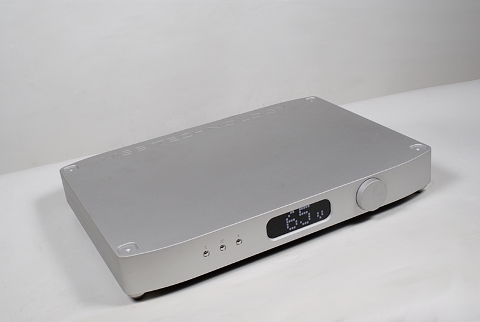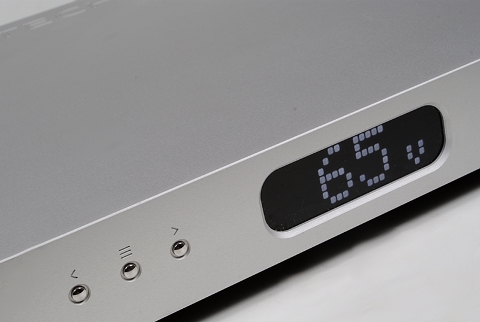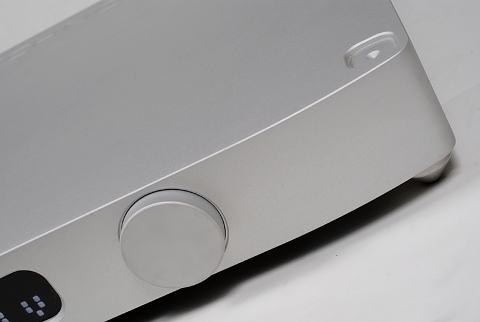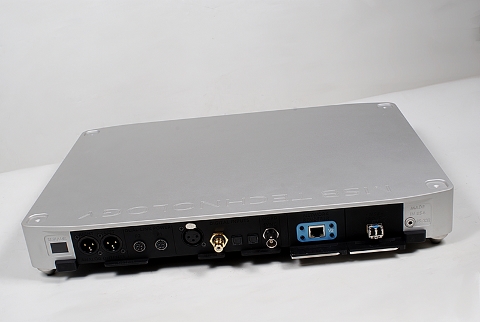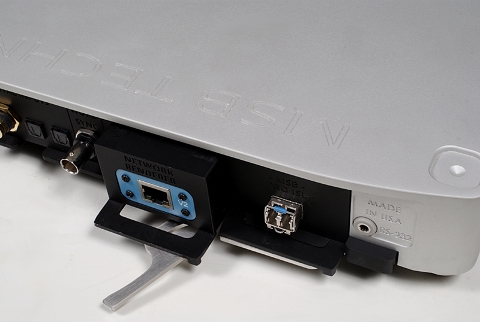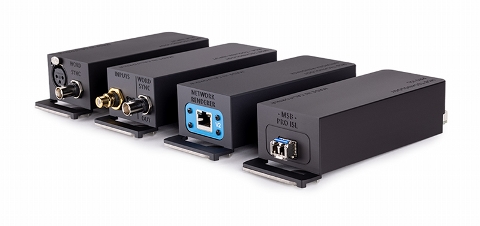about Audio, High Fidelity
& Home Entertainment technologies
pid: 607-2025/10/01 (v1.2)
Privacy Policy
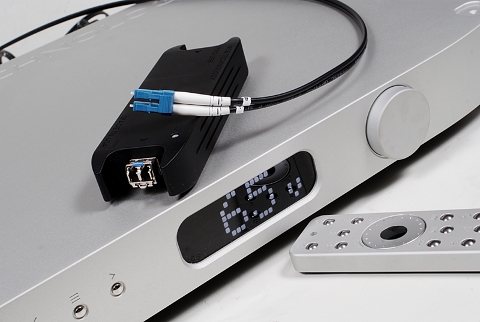
Discrete's low-key aesthetics are based on a short-height aluminum-billet chassis, the main feature of which is the large, very legible -even from a long distance- display, where the necessary information and the device's menu are displayed. The display uses a custom-made screen and consists of 119 LEDs of adjustable brightness. On the front panel, there are, also, the attenuator and the input selector, as well as a switch through which the menu is activated. The user can choose to operate the device in an Auto Mode, in which the active input is selected on a basis of a particular hierarchy. The device is accompanied by a high-quality remote control, through which all functions, including these of MSB's transports, can be controlled. The remote control is rechargeable via a USB port.
Discrete's chassis is made of solid aluminum. The user interface is simple, but what immediately draws attention is the large, legible display…
In the back panel, connectivity features are divided into two zones. The first zone (left) includes the basic inputs and outputs Discrete offers, by default, as delivered. There is a typical set of standard digital inputs (a coaxial, two optical, and an AES/EBU), a Word Sync output, as well as analog balanced outputs. The external power supply is, also, connected here, with a special "double output" connector -in our case- as we had the basic "dual link" power supply. All of the above are included in a module named Base Output Stage which can be ordered in a balanced or single-ended version. In the latter, judging by the available details, the inherently balanced signal format is converted to single-ended via balun transformers.
…which is manufactured by MSB and consists of 119 LEDs. When not in use, it simply shows the position of the attenuator. The "V" indicates the activation of the video mode, which facilitates the use of the converter in mixed AV systems to minimize audio latency.
The attenuator has a very good feeling. If there is an external preamplifier, it can be disabled. The chassis support points are configured as cones and a "nest" at the top is evident, where another MSB chassis can be placed.
The second zone (right) is the modular part of the Discrete. Here, the user can add up to two modules of his choice. MSB offers several solutions here, starting with standard digital inputs (which, however, offer a clock out to lock the transport in a master/slave configuration), a standard USB port (offering galvanic isolation), an Ethernet port (Network Renderer), as well as an optical interface (ProISL), based on two fiber optic lines. The user should select a module based on the desired sample rate and the isolation it offers. On our review sample, the two slots were occupied by a Network Renderer and a ProISL module, with the latter being part of the company's ProUSB package, a kit which, in addition to ProISL and fibers, includes an external USB-to-ISL transcoder, to offer complete galvanic isolation from the USB host.
The back panel includes the basic inputs/outputs (left) as well as the two slots for the add-on modules. The external supply includes different lines for the analog and digital parts of the circuit.
The review sample included the Network Renderer V2 module (left) and the ProISL module (right), where the two optical fibers should be connected, combined with an external USB/ISL transcoder.
Under the hood, the Discrete is particularly cryptic, in the sense that most circuits are in their own enclosures, except for the local regulators and the controller. Part of the motherboard hosts the D/A converter circuits, which are in the form of a thin rectangular module. Discrete uses a Prime DAC per channel, which is the basic version of the company's circuit (there is also a Hybrid DAC, featured in both the Reference and Select series). The next model of the series, Premier, uses two Prime DACs per channel. Although MSB does not give many details on these circuits, we know that they are based on a sophisticated Ladder architecture (not just an R2R implementation) and that they can operate on a wide range of clocking rates (6 to 50MHz). This allows the module to support practically any sample rate and format without the use of transcoding or resampling techniques. Depending on its configuration, Discrete can accept PCM from 44.1kHz to 3.072MHz and DSD up to 8x DSD and can, also, support DSD/DoP at all its inputs. The maximum sample rate is of course limited by the input used each time. The Prime DAC module, according to what MSB says, has a full balanced analog output that is directly driven to the output connectors, without an external I/V converter or a buffer stage using active components. Each Prime DAC module is tested separately and each Discrete features paired modules.
The clock circuit of the device is also of interest. Although Discrete is based on a simple solution, which is included in the Base Output Stage, we are dealing with a circuit using two separate oscillators, one for each basic sampling frequency (44.1kHz and 48kHz), hence there is no need for sample rate processing (for example an ASRC stage). In addition, the oscillator not in use is turned off to not introduce any noise.
Discrete leaves a lot to the imagination. Upper left, are the two DAC modules, bottom left, the power supply and the analog output, while in the middle are the clocking circuit and the isolated digital inputs, and top right, the processor that controls the device. The two slots for the modules are located at the bottom right.
The device features a Prime DAC module per channel. These modules have been developed by MSB and are matched to each device. The metal housing ensures the thermal balance of the circuit.
Previous | Next | More Reviews

